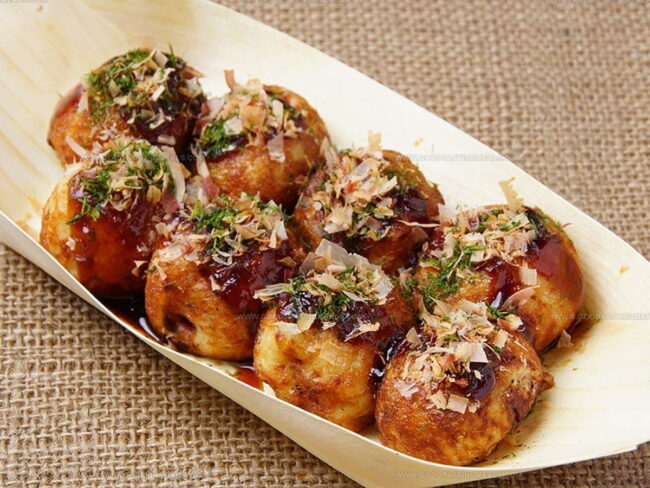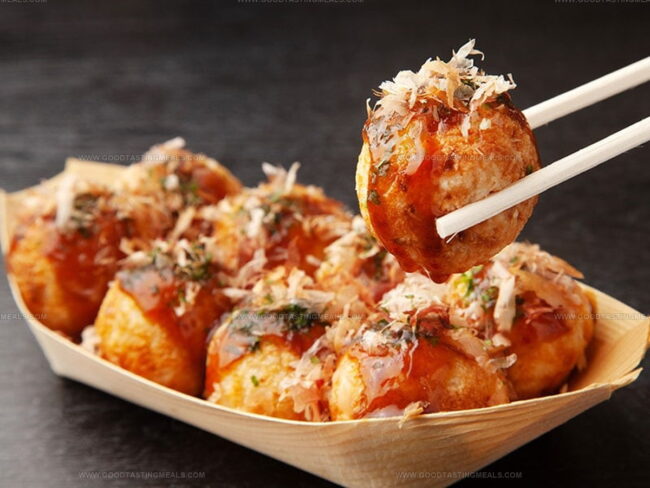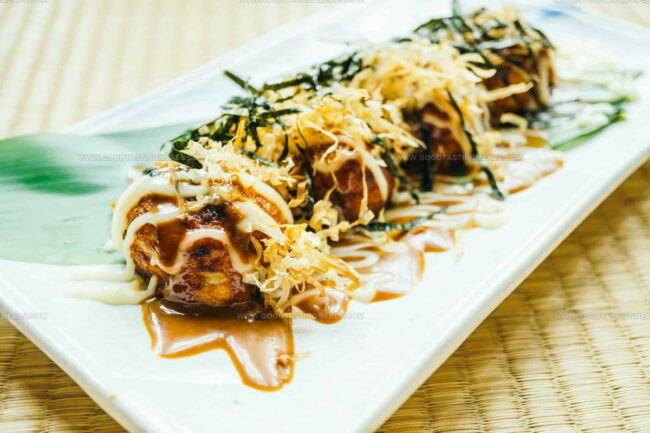What Does Takoyaki Taste Like? A Flavor Journey Into Japan’s Octopus Balls
Japanese street food enthusiasts often wonder about the unique flavor profile of takoyaki, a beloved octopus-filled snack that captures the essence of osaka's culinary culture.
These golden-brown spherical delights have intrigued food lovers around the globe with their crispy exterior and mysterious inner composition.
Street vendors craft these bite-sized treats using specialized cast-iron pans that create perfectly round balls packed with unexpected ingredients.
Curious eaters find themselves drawn to the complex textures and rich culinary traditions behind this popular Japanese delicacy.
The combination of carefully selected components transforms a simple recipe into a sensory experience that goes far beyond ordinary appetizers.
Each takoyaki ball represents a miniature culinary adventure waiting to unfold on your taste buds.
Your curiosity about this iconic snack will be richly rewarded as you dive deeper into its delectable secrets.
What Is Takoyaki?
Takoyaki is a popular Japanese street food made from a light batter filled with tender pieces of octopus.
These round, golden balls are cooked in a special pan and usually have a crispy outside with a soft, savory center.
Besides octopus, some stalls use other fillings like cheese or sausage for a twist on the classic.
The flavor comes alive with toppings such as tangy Worcestershire-style sauce, creamy Japanese mayo, and dried bonito flakes that wave from the heat.
Pickled ginger adds a little zing, and chili flakes can bring some spice if you like it hot.
Takoyaki is often served on a small tray with toothpicks, making it easy to snack on as you walk around.
Whether you stick to the classic octopus or try new fillings, takoyaki is a fun, flavorful bite that shows off the heart of Japanese street food culture.
What Does Takoyaki Taste Like?
Takoyaki offers a wet and smooth texture that melts smoothly in your mouth when you bite down.
Chewy octopus chunks inside bring a deep ocean taste to this salty snack.
Kelp flavors from dashi mix into the ball's batter, while additional toppings boost the overall taste.
Octopus lovers will definitely enjoy this treat!
Japanese street markets buzz with takoyaki's popularity.
Salty, chewy, and packed with meaty goodness, this snack carries a rich fishy broth flavor.
Regional differences create unique taste experiences, but core qualities remain consistent.
Anyone who has sampled takoyaki in Japan knows its special appeal.
Seafood and traditional broth ingredients like bonito flakes and kombu give takoyaki its distinctive salty profile.
Savory rather than sweet, this midday snack appears frequently at street stalls.
Shellfish fans appreciate its oceanic character and satisfying texture.
Ingredients Used in Takoyaki
Takoyaki consists of fried balls typically packed with octopus, though some versions include alternative shellfish and green herbs like cilantro or green onion to enhance color, texture, and taste.
Batter plays a key role in holding these balls together and creating their signature shape.
Chefs often mix herbs, spices, and tempura bits into the mixture, drawing from Japan's famous cooking techniques.
Takoyaki's flavor profile shifts depending on ingredients, cooking time, batter composition, and accompanying sauces.
Cooks generally deep-fry these treats, resulting in a crunchy exterior with a chewy shellfish center.
Ginger rarely dominates the flavor, so the taste remains quite mild.
Flavor and texture closely resemble golden batter-fried shrimp, with both dishes sharing a smooth, crisp characteristic.
Steps for Making Takoyaki
Spherical molds play a key role in takoyaki cooking.
Skilled chefs use special pans with round wells that help shape these tasty treats quickly.
Ingredients slide right into each spot without much stress about making perfect circles.
Making takoyaki at home becomes simple when you understand this basic technique.
Note: Cooking instructions work for 64 takoyaki balls, and you can reduce amounts by cutting ingredients in half.
What You Need
Follow These Steps
Is Takoyaki Sweet or Savory?
Sweet takoyaki dumplings offer a delicious twist on traditional savory versions.
Mixing Japanese pancake batter with sugary ingredients allows you to craft a simple and mouthwatering dessert.
Chefs can follow standard takoyaki cooking methods while switching out octopus for sweet fillings.
Mixing flour, eggs, and sugar creates a smooth base for these delectable round treats.
Cooks can add chocolate chips, fruit pieces, or caramel to make each dumpling unique and tasty.
Filling small round molds and carefully turning the dumplings ensures they cook evenly and develop a crispy outside with a soft center.
Matching classic takoyaki techniques with sweet ingredients results in a dessert that surprises and delights.
Dessert lovers can experiment with different flavor combinations to make these small spherical treats special.
Small round dumplings offer a playful way to enjoy a sweet snack that feels both familiar and exciting.
How to Enjoy Takoyaki
Takoyaki balls come with many tasty options.
You can enjoy them without anything or add sauce, cheese, bonito flakes, or Japanese mayonnaise on top.
These little snacks match well with rice, stir fry, soup, salad, and meat dishes.
Chefs often include them as part of a larger meal or alongside seafood plates.
Serving timing matters for the best experience.
Eat these treats right after cooking in the takoyaki pan.
Waiting too long or putting them in the refrigerator can change their texture.
Cold takoyaki lose their crisp outside and become soft.
Enjoy them fresh and hot for maximum flavor and perfect texture.
What Is Takoyaki Sauce?
Takoyaki sauce comes as a dark sauce perfect for drizzling over or dipping into takoyaki balls.
Shoppers can find this sauce ready-made in Asian markets or international grocery sections.
Making sauce at home happens quickly with basic ingredients.
Mix ketchup, sugar, Worcestershire sauce, and tsuyu into a smooth blend for homemade takoyaki sauce.
When measurements match correctly, sauce becomes thin and flows nicely over warm octopus balls.





